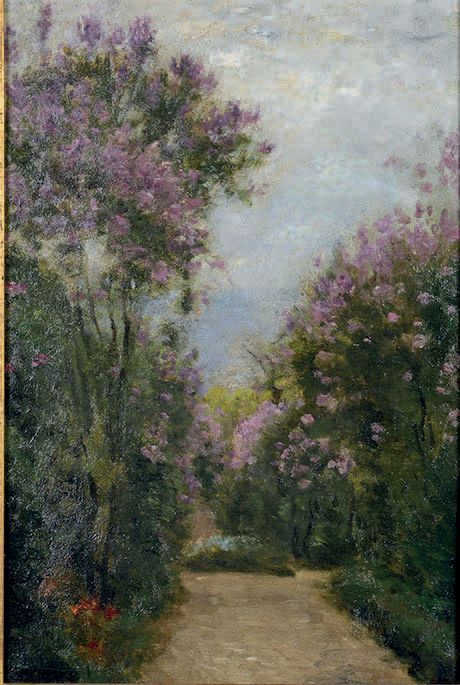#stanislas lepine
Photo

La Seine à Ivry, près de Paris (The Seine at Ivry, near Paris), Stanislas Lépine, 19th century
Oil on canvas
12 x 21 ⅝ in. (30.3 x 55 cm)
#art#painting#stanislas lepine#impressionism#19th century#seine#france#landscape#cityscape#oil#french#ivry
21 notes
·
View notes
Photo

Stanislas Lepine
Bras de Seine du côté de Neuilly, 1878-1882
5 notes
·
View notes
Photo
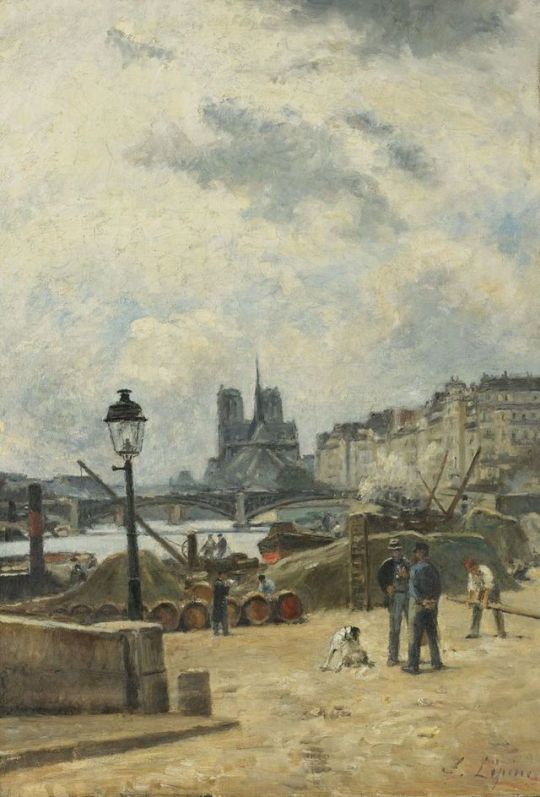
The Seine at Pont Sully and the Quay of Henri IV - Stanislas Lepine
15 notes
·
View notes
Photo

River Bather by Stanislas Lepine
#river bather#stanislas lepine#lepine#Impressionist#impressionism#art#arte#kunst#sztuka#french art#french painter#river#water#blue#france#french#boat#night#cloudy night#darkness#journey#moon#landscape#city#vintage
6 notes
·
View notes
Photo

Stanislas Lepine (1835 - 1892) L'Esplanade Des Invalides (41 x 32,5 cm)
2 notes
·
View notes
Photo
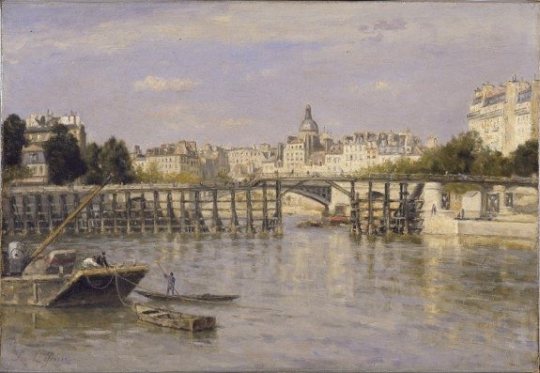
#HappyBirthday to painter Stanislas Lepine, born #OnThisDay in 1835. Lepine a self-taught artist, sought the advice of Camille Corot and Johann Barthold Jongkind, two artists who influenced the early development of Impressionism, and he participated in the first impressionists’ exhibition in 1874. Although he shared the Impressionists’ interests in atmospheric effects, his views of Paris and the Seine River were characterized by their distinctively delicate treatment. His works are devoid of any romantic overtones, and human figures, when they occur, are subordinated to the settings. ⠀ Learn more about his artwork here: http://buff.ly/2usPlmp http://bit.ly/2kjVLTf
#October 03#2017 at 04:39PM https://scontent.cdninstagram.com/t51.2885-15/e35/22159503_1726264737385
6 notes
·
View notes
Text
The Lepines
My wife’s gr-grandmother on her father’s side, named Agnes Lepine died in 1991, a year after my wife was born.
Agnes’s father was Emile Ernest Arthur Lepine, whose spouse was Marie Julie or Julie Ann Cardinal depending on the source. They lived in a small Metis community known as Rooster Town. This community is where the modern Grant Park Shopping Mall in Winnipeg, Manitoba, Canada stands today. David G. Burley has an excellent article on the location and people living there.

The house occupied by Ernest and family in Rooster Town
Ernest’s parents were Louis De Gonzague Stanislas Lepine and Mathilda Perreault. Louis was one of Ambroise-Dydime Lepine’s children.
Ambroise-Dydime (my wife’s 4th gr-grandfather, born 1840, died 1923) and his brother Maxime Lepine are the bulk of whom I will discuss here.
Ambroise, pictured below, was a Metis political and military leader and one of Louis Riel’s greatest lieutenants .
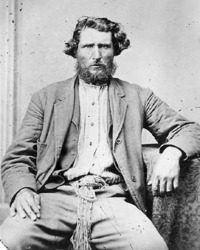
Ambroise and Maxime’s parents were a Hudson Bay Company employed father, and a mother of mixed English and Saulteaux descent. Ambroise’s wife, Cecile Marion was French and Metis.
In the Provisional Government of Assiniboia that was set up during the conflict with the HBC (Hudson Bay Company), Lepine was elected to serve for St. Boniface.
As mentioned before, Ambroise, during this period, served in a military function as well, possibly due to his supposed respect amongst fellow Metis buffalo hunters and trappers.
Ambroise had a very strong relationship with the Catholic Church and was heavily aligned with them as well. One Rev. Roderick MacBeth described Ambroise as standing “six foot three” and of, “splendid proportion”. It was Ambroise’s loyalty to the Chruch that ultimately seperated him and Riel.
Lepine was part of the tribunal that sentenced Thomas Scott to death. He was later arrested after Riel’s first rebellion in 1869 fell through. He was however spared from hanging, and granted amnesty, due to them fearing another uprising in Red River if the sentence were to pass.
Said of his other exploits :
Ater his release from prison on 26 Oct. 1876 Lépine maintained close contact with Riel and Taché and remained active in Manitoba’s French-speaking community. In 1871 he had participated in the formation of the Union Saint-Alexandre to protect Métis interests in the new province and in 1878 he was elected vice-president of the Société Saint-Jean-Baptiste. The following year, when Riel tried to enlist him in the project of uniting the Métis and Indians of the northwest into a confederacy, he travelled to Montana Territory to meet with Riel. Although he spent the winter with the Métis of the region, he took the advice of Taché, who was worried about possible trouble in the northwest, and left before seeing Riel. This decision, and his siding with Taché over the Métis leader, seems to have been a turning-point. From then on he stayed out of Métis politics.
Maxime, his brother, was another Metis politician and activist. Like his brother, he served his community in the legislative assembly of Assiniboia. He was the seat representative of St. Francois Xavier-East.
Unlike Ambroise however, he had more faith in Riel than the Church to protect the mixed lineage rights of the Metis (indigenous and Eurpopean settlers). Furthermore, despite being in his own words, “”not keen on war” Maxime served at the Battle of Fish Creek :
(a crucifix in one hand and a rifle in the other, according to Abbé Gabriel Cloutier) and at Batoche in May.
Regardless of his faith in the cause, the 1885 Rebellion still was defeated by Canadian forces, and afterward Maxime made reparations with the Church and withdrew from political life.
0 notes
Photo

Le Long de l'Orne peint depuis le cours Caffarelli, effet de lune* - Stanislas Lepine
French, 1835-1892
Oil on canvas 9 x 13 in.
* The Long Orne painted since Caffarelli course, moon effect
252 notes
·
View notes
Photo
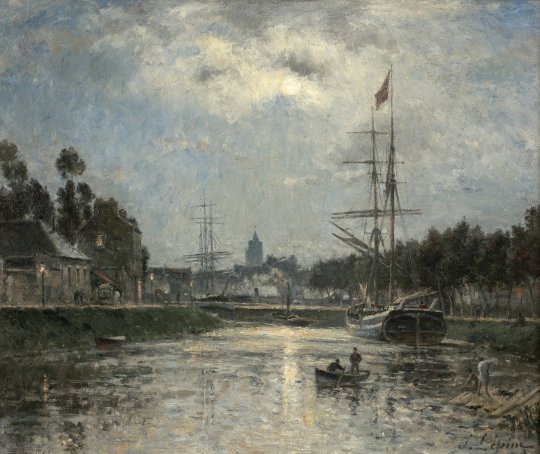
Stanislas Lépine (French, 1835-1892), Caen: Le Bassin Saint-Pierre et l'Abbaye aux Dames, effet de lune, 1872-76. Oil on canvas, 46.5 x 55 cm.
250 notes
·
View notes
Photo
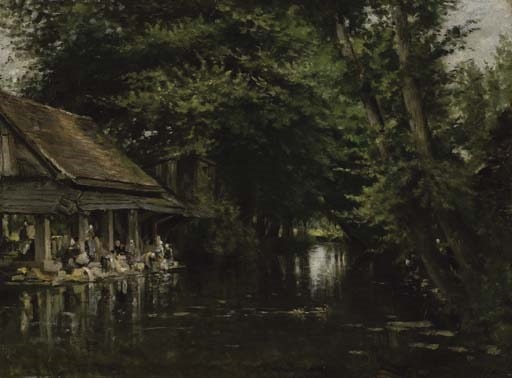
Stanislas Lepine
Lavoir aux environs de Caen, 1872-1873
5 notes
·
View notes
Photo

Entrance to the Port by Stanislas Lepine, Oil painting reproductions
#Oil painting reproductions#Oil painting reproduction#Stanislas Lepine#Impressionism#Seascapes#oil painting#painting
9 notes
·
View notes
Photo

#HappyBirthday to painter Stanislas Lepine, born #OnThisDay in 1835. Lepine a self-taught artist, sought the advice of Camille Corot and Johann Barthold Jongkind, two artists who influenced the early development of Impressionism, and he participated in the first impressionists’ exhibition in 1874. Although he shared the Impressionists’ interests in atmospheric effects, his views of Paris and the Seine River were characterized by their distinctively delicate treatment. His works are devoid of any romantic overtones, and human figures, when they occur, are subordinated to the settings. ⠀ Learn more about his artwork here: http://buff.ly/2usPlmp http://bit.ly/2kjVLTf
3 notes
·
View notes
